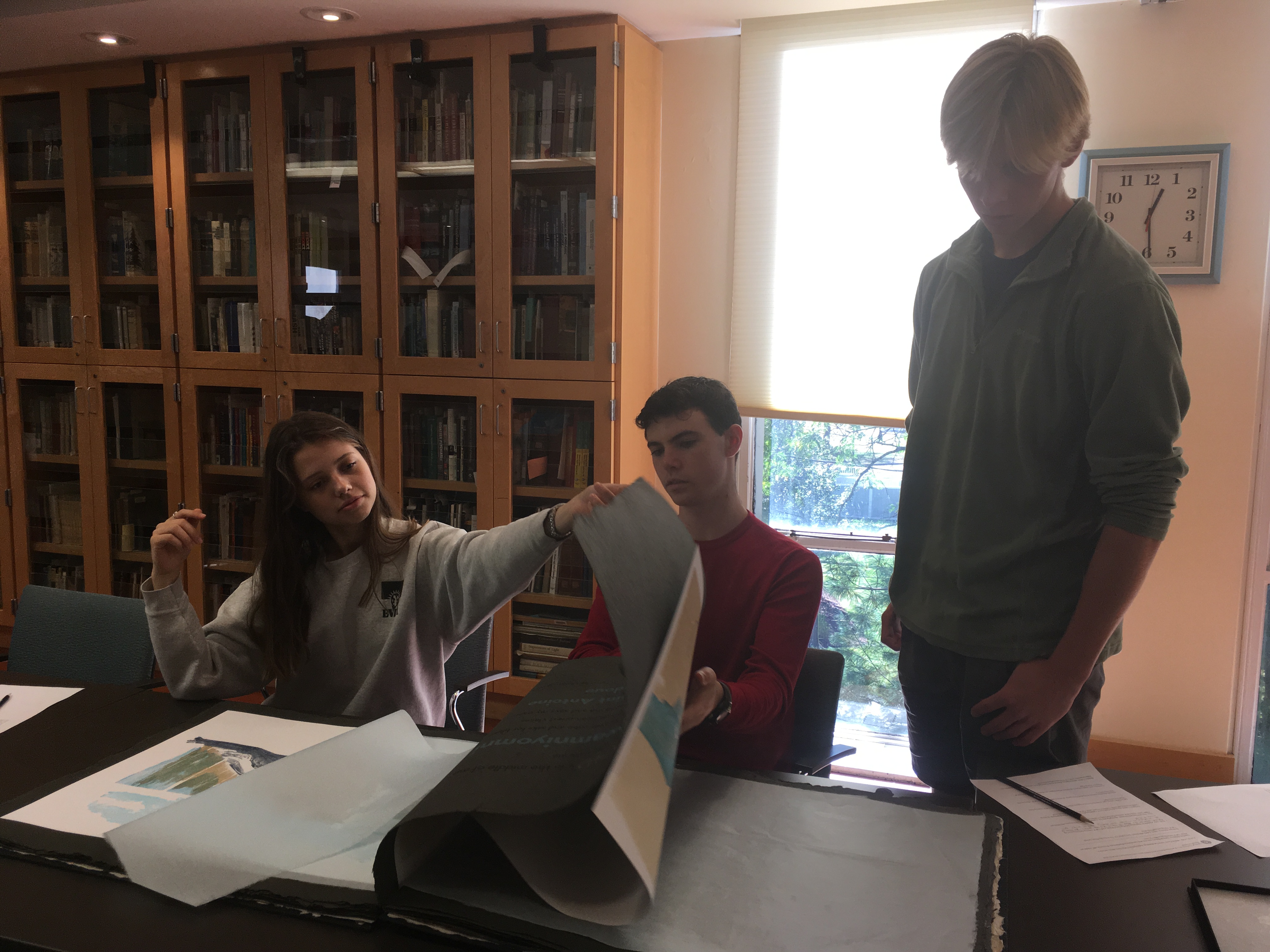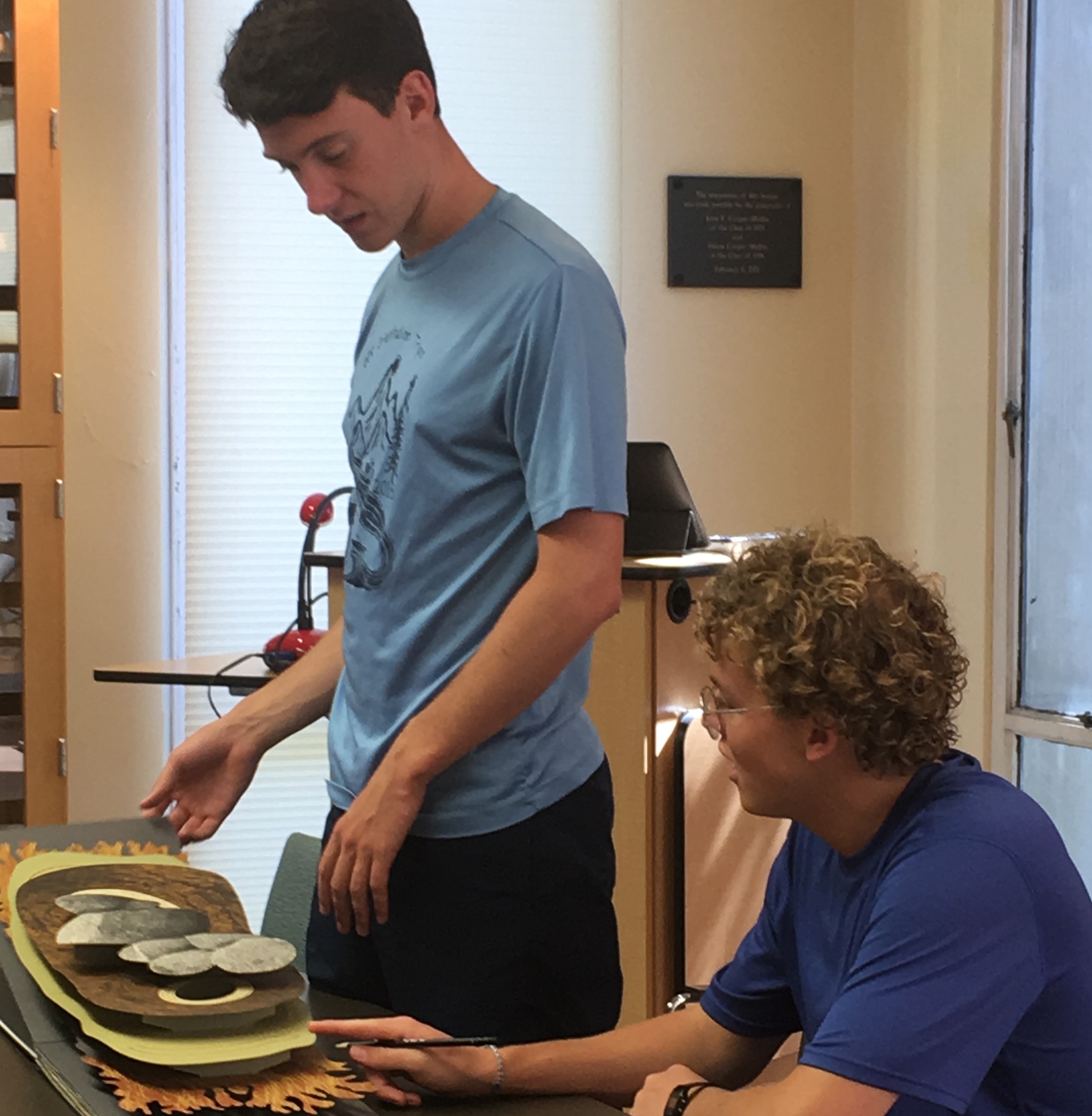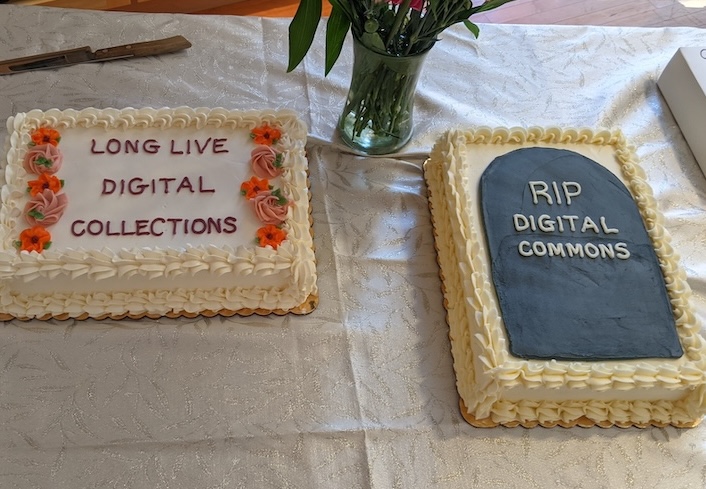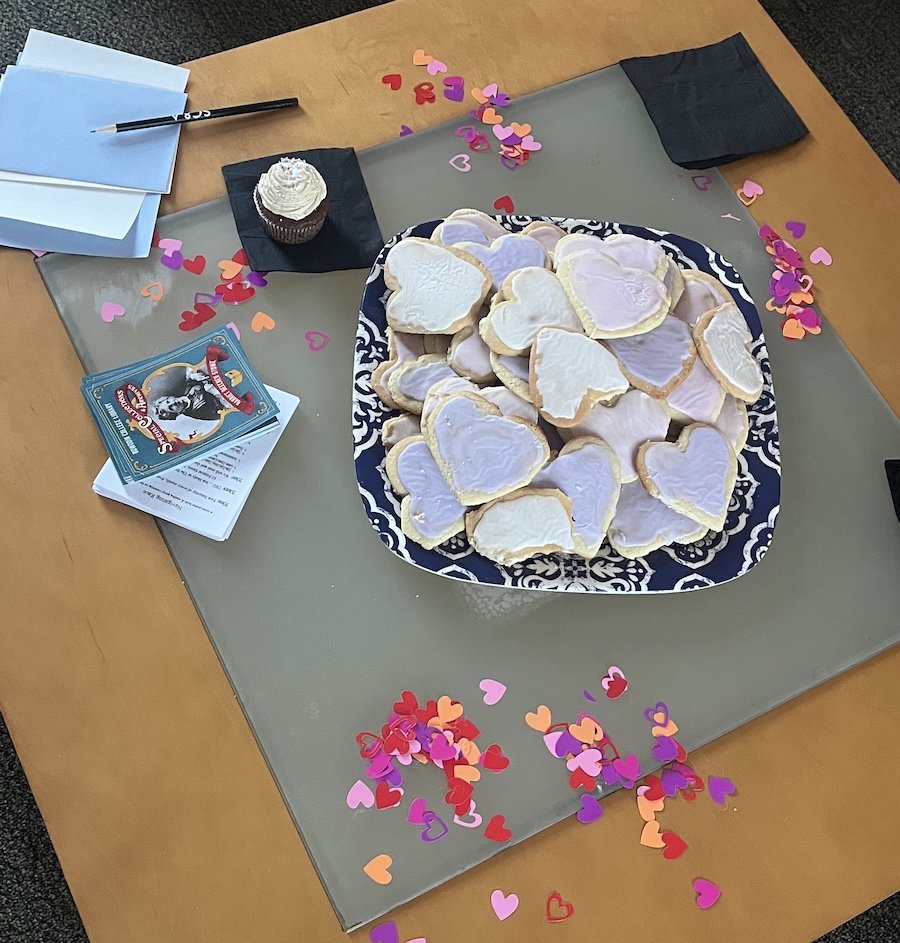Prints and Traces: The Environment in Special Collections
By Holden Turner '21
Consider the environment in which we read. Many students choose to print articles and read with a hard copy in their hands, marking it up with a pen as they go through the lines. Others save their printing allowance and scroll through essays on a screen. Step into Special Collections on the third floor of Hawthorne-Longfellow Library and the staff guides us to books that invite us to read in a different way.


In contrast, a book on the opposite table contained a poem and bold-painted leaves and flowers. This, we learned, was a local artist’s book that reacted to Furbish’s drawings. The former was rooted in the sciences, the latter strayed to the arts; but both crossed disciplinary boundaries and furthered our understanding of plant life.
With our remaining time, we paged through other artist’s books that had some connection to environmental studies. The themes in the books were striking, for sure: images of Greenland from past and present, small drawings of trees and shadows, enormous prints showing dams and industry, a pop-up book asking the reader to confront the facts of global change.




